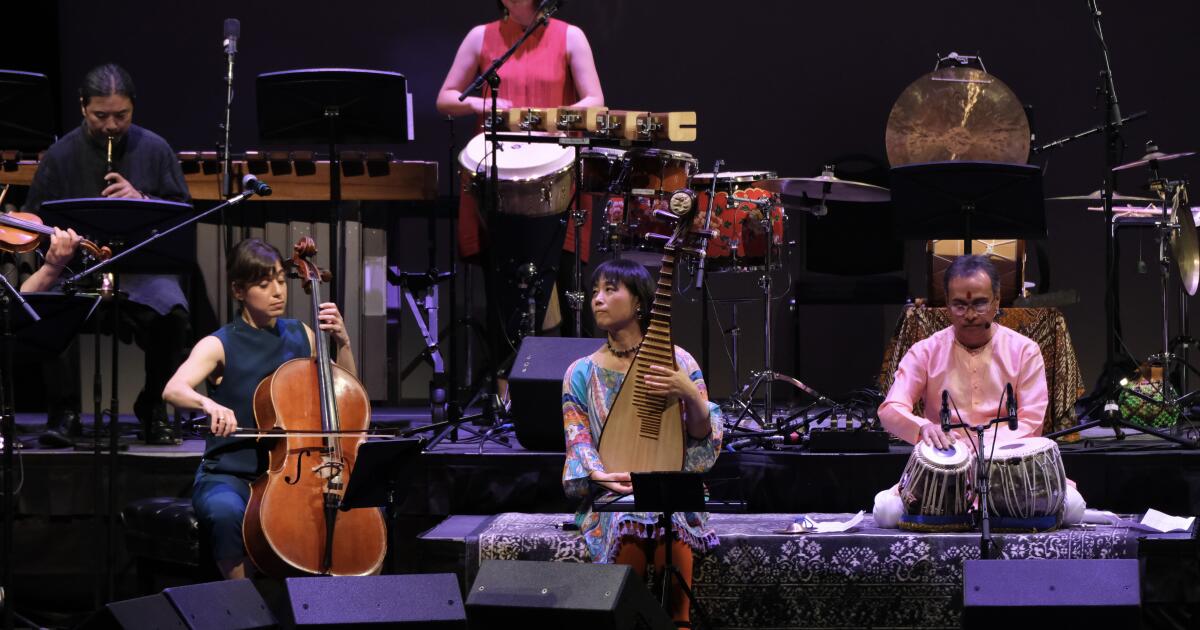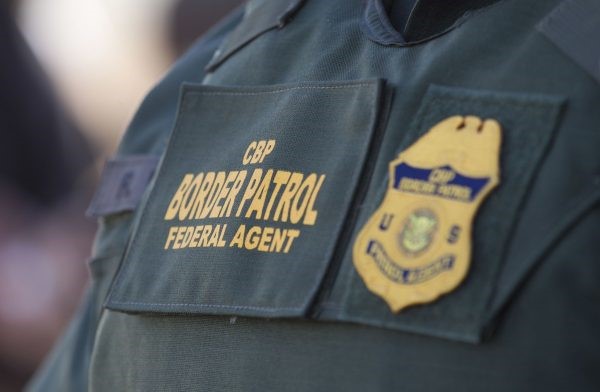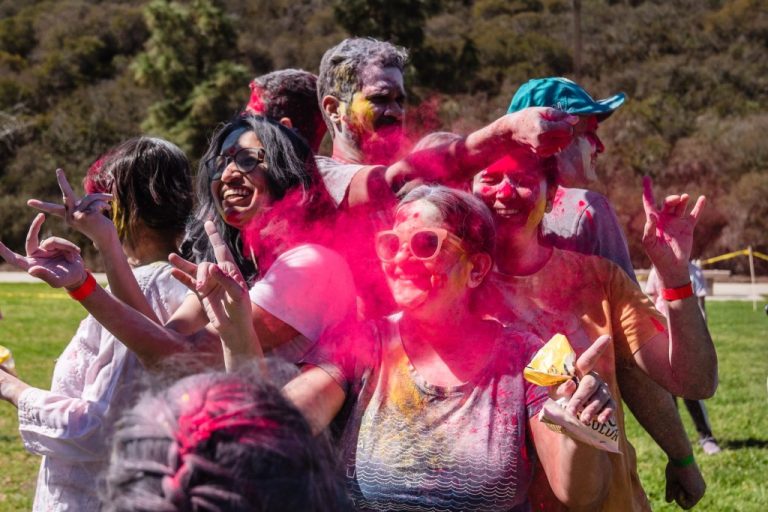
Silkroad Ensemble pulled into San Diego’s Balboa Theatre on Friday evening with their current show, “American Railroad.”
Artistic Director Rhiannon Giddens and twelve multicultural musicians captivated a full house with music inspired by the workers that built the transcontinental railroad, as well as Indigenous communities displaced by the railway.
The folk song “Swannanoa Tunnel” was a refrain throughout the concert. First recorded by the Appalachian folklorist Bascom Lamar Lunsford, it was originally a work song with different lyrics by Black laborers.

After sounding a conch shell, Tuscaroran musician Pura Fé sang it unaccompanied to open the evening. That led into her original canoe song honoring her ancestors along the Northeast waterways, a callback to the conch shell.
When Giddens later sang “Swannanoa Tunnel,” the percussionists in the ensemble played loud single strokes between her phrases like hammer blows.
Giddens — with her MacArthur “Genius” Award, her Pulitzer Prize for her opera “Omar,” and her appearances on the TV drama “Nashville” — may be the best-known member of the current Silkroad Ensemble lineup. However, she has assembled expert musicians drawing from African, Chinese, Irish, African-American, Japanese, Indian, classical and Indigenous traditions.

Silkroad Ensemble artistic director Rhiannon Giddens sings at the group’s Nov. 10 concert in San Diego.
(Courtesy of Ken Jacques)
Tabla master Sandeep Das had an exhilarating improvisation on a four-note rhythm representing the gradually increasing momentum of a locomotive.
Encinitas resident Wu Man composed a melancholy song based on a Chinese folk tune, performed by Giddens on banjo and vocals, with Wu Man on pipa. It showed the similarities between the African-American and Chinese instruments and their respective styles of song, while creating something new in the process.
In her composition “Time Elapse,” Man evoked the sorrow of Chinese families separated from their immigrant husbands, using Chinese percussion, pipa, a Chinese reed instrument, violins, cello, bass, and Irish harp.

Composer and pipa player Wu Man performs at the Silkroad Ensemble concert Nov. 10 in San Diego.
(Courtesy of Ken Jacques)
This was followed by a composition for voices, percussion and pipa by Cecile McLorin Salvant: “Have You Seen My Man?,” a bluesy song about a woman’s lover flying away from her on a train. It ended with gorgeous four-part harmonizing from Giddens, violinists Mazz Swift and Michi Wiancko, and cellist Karen Ouzounian.
More than 13,000 Japanese laborers worked on the railroads, as well, a consequence of the Chinese Exclusion Act of 1882 that prohibited the immigration of laborers from China. Percussionist Haruka Fujii played a feisty solo suggesting Noh vocalizations and drums, as well as Kodo drumming, a Japanese counterpart to Sandeep Das’ earlier train music.
This was followed by Fujii’s deft arrangement of a Japanese tamping song for the full ensemble.
An evening highlight was “Railroad Dreams” by the Lakota composer Kite (also known as Suzanne Kite). It had a graphic score that used Lakota Visual Language to represent Silkroad Ensemble members’ dreams. Projected on a screen above the musicians, the score was fascinatingly interpreted by the entire group.
Swift contributed a spiritual-like song, “O Shout!,” poignantly crooned by her and the other vocalists. Elsewhere in the concert, her contributions on violin were alternatingly exuberant or plaintive.
The concert closed with a chorus of “Swannanoa Tunnel” exquisitely sung by an unaccompanied Rhiannon Giddens.
For an encore, Giddens played a driving fiddle version of “Steel Driving Man,” in which everyone in the group accompanied and took turns soloing.
Throughout the evening, video projections by Camilla Tassi juxtaposed historical photos with artworks from the various cultures heard in the concert.
Although an informative 16-page booklet was distributed with the La Jolla Music Society program, it was too dark to read during the show. A QR code in the program opened up to detailed program notes, but I did not see many audience members consulting those. Having those notes printed in an additional handout would have clarified much for puzzled concertgoers.
Hertzog is a freelance writer.






